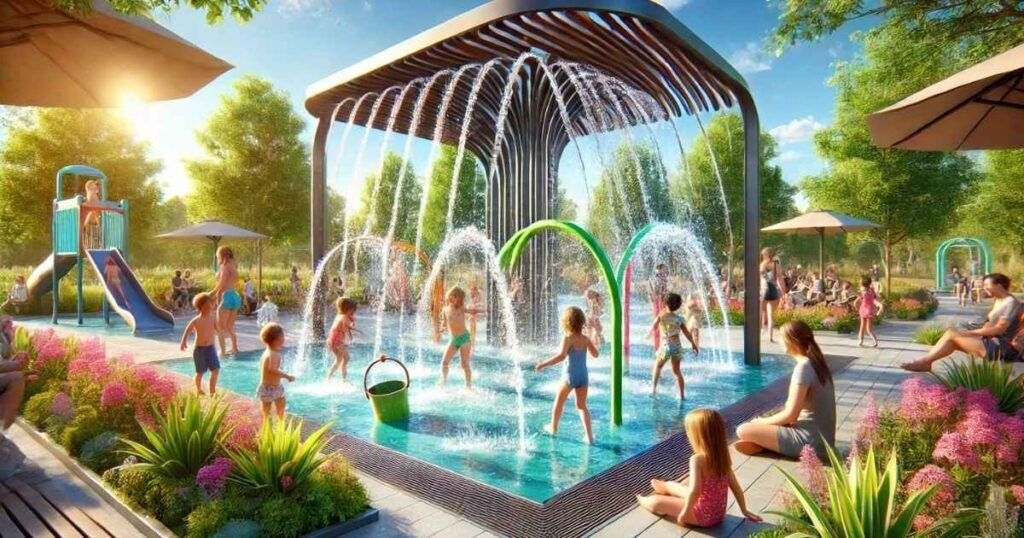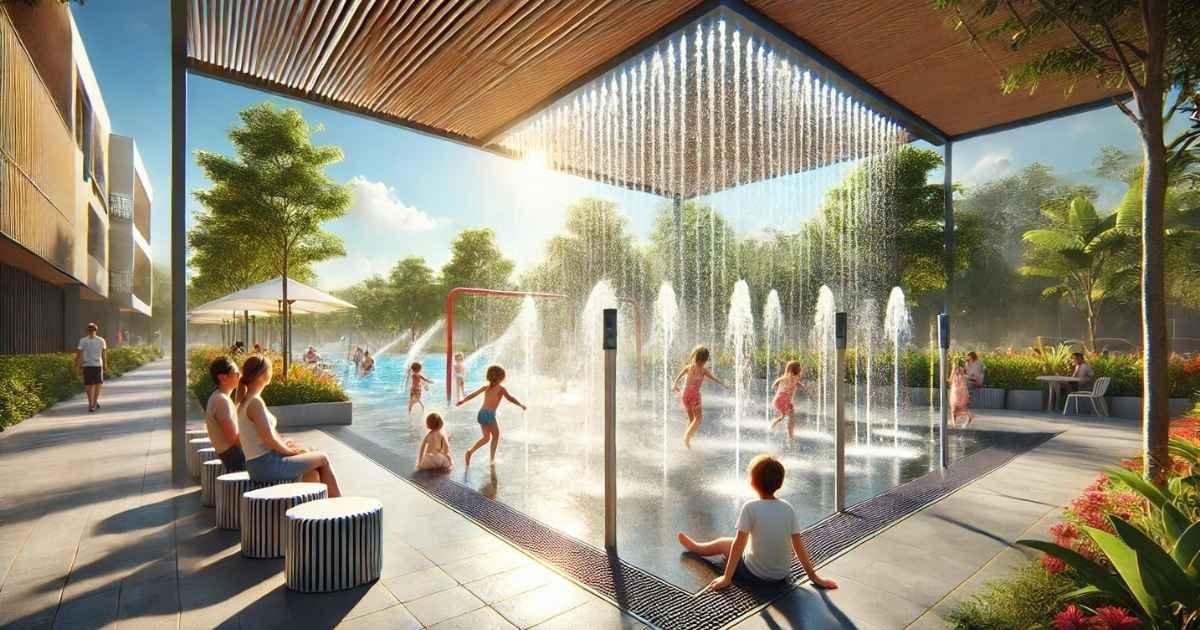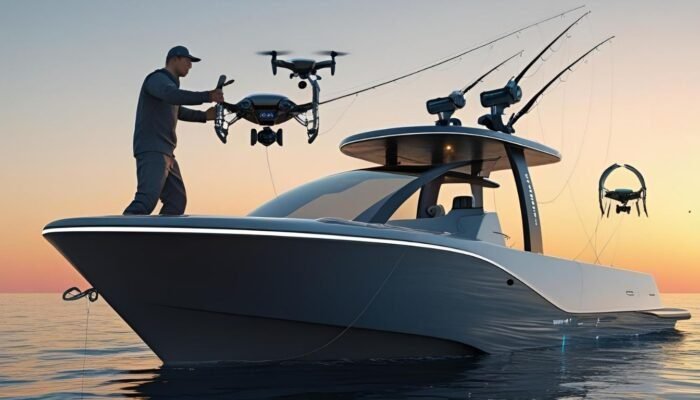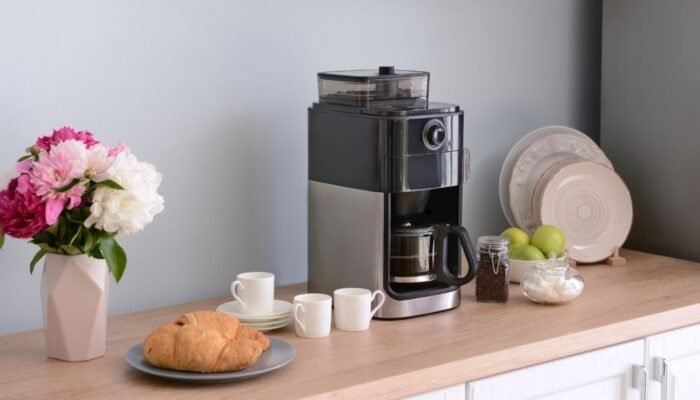Introduction
Splash pad is a modern solution to summer fun that combines water play with safety and convenience. Unlike traditional pools or water parks, splash pads are designed to maximize enjoyment while minimizing risks, making them perfect for kids and families.
Splash pads are becoming a popular choice for families seeking low-cost, engaging outdoor activities. With a variety of designs and features, they offer entertainment for children of all ages while giving parents peace of mind. This blog will explore everything you need to know about splash pads: their benefits, how they work, their role in community spaces, and why they are becoming a staple in urban and suburban landscapes. Whether you’re a parent planning your next outing or a community leader considering installing one, this comprehensive guide will cover all the essentials.
What Are Splash Pads?
The Basics of Splash Pads
A splash pad is a recreational water play area that features various water jets, sprays, and fountains. Unlike traditional pools, splash pads have no standing water, significantly reducing drowning risks. These spaces are often designed with vibrant themes, interactive elements, and non-slip surfaces, making them ideal for children of all ages.
The absence of standing water makes splash pads not only safer but also more accessible for a broader range of participants. Parents with young children often prefer splash pads because they eliminate the need for life jackets or constant vigilance around deep water. They also encourage family-friendly fun in a controlled, secure environment.
History and Evolution
Splash pads have evolved significantly over the years. Initially designed as simple fountains in parks, they’ve grown into highly interactive play zones featuring advanced water systems, colorful designs, and eco-friendly technology. The first splash pads were often basic installations, but today, they can be tailored to fit specific themes, such as jungles, pirate ships, or outer space adventures, making them even more appealing to children.
Modern splash pads integrate state-of-the-art technology to enhance both safety and play. Features such as touch-activated water jets, programmable fountains, and LED lights for evening use have transformed splash pads into multifunctional attractions suitable for all-day fun.
Benefits of Splash Pads
1. Safety First
Unlike swimming pools, splash pads eliminate standing water, reducing the risk of accidental drowning. The absence of deep water makes them a safer option for toddlers and young children. Additionally, most splash pads feature slip-resistant surfaces to prevent injuries during play.
Safety is further enhanced by built-in timers and water flow controls, ensuring that water is used only when needed. These systems also minimize the risk of slipping by preventing water from pooling in any one area. Many splash pads also include soft landing zones around high-activity areas, further reducing the likelihood of injuries.
2. Affordable Fun
Splash pads are an economical choice for families. Many public splash pads offer free entry, and even private ones are far more affordable than water parks or pools. They provide hours of entertainment without breaking the bank.
For communities, splash pads represent a cost-effective way to provide recreational activities. Spray pads offer a cost-effective alternative to swimming pools, requiring less maintenance, fewer staff, and reduced operating expenses. This makes them an attractive option for municipalities looking to enhance community spaces. Families also enjoy the financial benefits of having free or low-cost entertainment available in their neighborhoods.
3. Encourages Physical Activity
Engaging in water play is a fantastic way for children to stay active. Running through water jets, dodging tipping buckets, and engaging in interactive games promote physical fitness, coordination, and motor skills.
Beyond physical benefits, splash pads encourage imaginative play. Children often create games, role-play scenarios, and team-based activities, fostering creativity and social development. The playful nature of splash pads ensures that kids remain engaged and active without even realizing they’re exercising. Active water play also supports cardiovascular health and energy balance.
4. Inclusive Play

Modern splash pads are designed to be accessible to children of all abilities. Features like ground-level sprays, wide pathways, and sensory-friendly designs ensure everyone can join the fun.
Inclusivity extends to caregivers and adults, with shaded seating areas and easily navigable pathways allowing families to enjoy the experience together. Many spray pads also feature sensory elements, such as varying water textures and gentle mists, which are particularly beneficial for children with sensory processing challenges. These thoughtful designs make splash pads welcoming spaces for everyone, including grandparents and guardians.
5. Eco-Friendly Recreation
Many splash pads incorporate recirculating water systems that filter and reuse water, making them an environmentally friendly option. Advanced technology ensures water conservation while maintaining hygiene standards.
Additionally, splash pads often use solar-powered pumps and energy-efficient systems to minimize their environmental footprint. These eco-friendly features align with broader community goals for sustainability and responsible resource management. This makes spray pads not only enjoyable but also a responsible choice for communities striving for greener initiatives.
Types of Splash Pads
Splash pads, also referred to as spray parks or splash zones, are categorized into several types to suit specific needs, spaces, and audiences. Interactive splash pads feature water cannons, hand-activated spray jets, and tipping buckets, providing an engaging experience ideal for community parks and recreation centers. Thematic splash pads include custom-designed features like marine animals, jungle elements, or space-themed structures, perfect for amusement parks and themed resorts. Inclusive splash pads are designed for accessibility, incorporating ground-level fountains, sensory-friendly elements, and wheelchair-compatible designs, catering to children with special needs and ensuring universal fun. Urban splash pads are compact, often equipped with LED-lit water jets and minimalist designs, ideal for city parks, plazas, and rooftop spaces where room is limited. Eco-friendly splash pads focus on sustainability, using water recirculation systems, solar-powered pumps, and permeable surfaces to reduce water waste and environmental impact. Natural-style splash pads mimic outdoor features like streams, waterfalls, and rocky landscapes, blending seamlessly into nature-themed parks and open spaces. Seasonal or portable splash pads are modular or inflatable, making them easy to set up and dismantle for events, festivals, or temporary recreational needs. Finally, commercial splash pads are built for high-capacity use in water parks or resorts, featuring durable materials, multiple play zones, and advanced water management systems. Each type of spray pad is designed to deliver a fun, safe, and memorable water play experience, tailored to specific environments and audiences.
Must Read : www.aeonscope.net: Everything About Gaming and More
How Splash Pads Work
Water Systems and Recycling
Spray pads use a combination of pressurized water jets and gravity-fed systems to create exciting water effects. Most modern designs feature:
- Recirculating Systems: These collect and filter water for reuse. Filtration systems remove debris and bacteria, ensuring the water remains clean and safe.
- Freshwater Systems: Water is used once and drained, typically in areas with abundant water resources. While less common, these systems are still found in smaller or older installations.
Recycling systems play a significant role in reducing water waste, making them a sustainable option. Advanced spray pads even incorporate rainwater harvesting systems to supplement their water supply, further enhancing their eco-friendliness.
Safety Features
- Non-Slip Surfaces: Made from rubber or textured concrete to prevent falls. These materials are designed to withstand heavy use and extreme weather conditions.
- Automated Timers: Water features activate only when needed, conserving resources. This ensures that water flow is efficient and limits unnecessary waste.
- UV Filtration: Ensures the water remains clean and safe for children by killing bacteria and other harmful microorganisms.
Interactive Elements
Spray pads often include:
- Ground Jets: Sprays of water from the ground that vary in intensity and patterns.
- Tipping Buckets: Buckets that fill with water and tip over, creating bursts of excitement.
- Water Cannons: Interactive sprayers that kids can control, adding an element of strategy to their play.
- Themed Features: Elements like pirate ships, animals, or castles to spark imagination. These features are often designed to blend seamlessly with the surrounding environment, enhancing the aesthetic appeal of the area.
The interactive elements not only provide entertainment but also encourage social interaction and cooperative play among children. These features help build social skills and confidence in young participants.
DIY Splash Pads: Bringing the Fun Home
Building Your Own Splash Pad
Designing a spray pad at home is simpler than you might imagine. Here’s what you’ll need:
- Materials: Non-slip mats, water hoses, and sprinklers.
- Space: A flat, open area in your backyard. Ensure the space is clear of sharp objects or debris.
- Budget: Costs can range from $500 to $5,000, depending on complexity. Pre-made kits are available for those looking for a hassle-free solution.
Safety Tips for DIY Splash Pads
- Ensure proper drainage to avoid standing water. Poor drainage can lead to puddles that may attract insects or create slipping hazards.
- Use soft, slip-resistant materials. Rubber mats or foam padding can provide additional safety.
- Supervise children closely during use. Even in a home setting, constant supervision is essential.
Customization Ideas
- Add colorful water features to match a theme. Themes can range from undersea adventures to space exploration.
- Incorporate interactive elements like water cannons or small fountains. These features captivate children, keeping them engaged and enthusiastic.
- Install LED lights for nighttime fun. Evening spray pad sessions can be a unique and magical experience for kids.
Future Trends in Splash Pads
Technological Innovations
- Smart Features: Touchless activation and programmable water displays. These systems allow for customized play experiences and improved water management.
- Energy Efficiency: Solar-powered pumps and LED lighting. Sustainable energy solutions reduce operational costs and environmental impact.
- Augmented Reality: Interactive experiences blending digital and physical play. Imagine splash pads where children can interact with virtual sea creatures or participate in gamified challenges.
Conclusion
Splash pads offer a perfect blend of safety, affordability, and entertainment, making them an ideal choice for summer fun. Whether you’re visiting a local park, building one at home, or advocating for a community installation, spray pads are an investment in joyful, active, and inclusive play for kids and families alike.
Explore a spray pad near you this summer and create lasting memories with your loved ones.
Read More : Wildebeest Migration: Nature’s Grand Spectacle Unfolds
Thanks for visiting Globalexpressinfo.com. Don’t forget to share it on Twitter.






